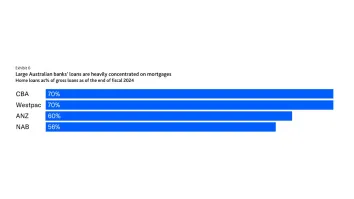Embracing Change and Capturing Opportunities with Insights from Leading Chinese Banks
By Nicole ZhouBanking Reimagined: Embracing Change and Capturing Opportunities with Insights from Leading Chinese Banks.
In the ever-shifting sands of the global economy, the banking industry finds itself at a crossroads. Stagnant growth, volatile market conditions, and evolving customer expectations are testing the resilience of banks worldwide. Yet, amidst these challenges, leading Chinese banks are charting a new course, offering valuable insights and strategies for banks to redefine their positioning, embrace innovation, and capture untapped potential. To thrive in this complex economic landscape, banks must:
- Lead in Digital and Innovation, Customer Experience, and Driving Growth
- Be in the Early Stages of Transforming Business Portfolio, Efficiency, and Granularity of Management
Navigating Market Uncertainties: A Call for Innovation and Agility
The global economic landscape is fraught with uncertainty, from geopolitical tensions to fluctuating market conditions. Many banks are struggling to maintain growth momentum and sustain returns. To overcome these challenges, banks must break free from the status quo and embrace innovation. As the saying goes, “Innovation is not just about technology; it’s about reimagining the entire customer journey.”
According to our research, only about 10 percent of the industry has managed to improve their return on tangible equity by five deciles over the past five years, while roughly two-thirds have stayed within two deciles of their prior performance. For banking to recover its multiple, management teams must conjure the dynamism of these winners. The “management quotient” will be the key differentiator in the remaining years of the 2020s.
Exploring New Growth Areas: Insights from Leading Chinese Banks
While the broader banking industry has been lagging, leading Chinese banks have emerged as trailblazers. They have undertaken significant efforts to deepen business depth, implement new organizational structures, and enhance business models. These banks are not just surviving; they are thriving.
For example, one leading Chinese bank improved its fee structure by understanding customer asset and liability situations, distributing costs across different departments, and enhancing financial performance. This strategic alignment not only boosted profitability but also increased customer satisfaction. As the bank’s CEO put it, “Understanding our customers’ financial landscape is the first step to unlocking their potential and ours.”
Leading Chinese banks have also explored new sources of income and growth beyond traditional portfolios. They are focusing on areas such as technology innovation, elderly care, and green finance. These initiatives have driven new revenue streams and positioned them to capture emerging market opportunities. One bank’s Chief Marketing Officer noted, “Innovation is our compass, guiding us to uncharted territories of growth and sustainability.”
Strategic Investments and Diversification: Optimizing Business Portfolios
In an era of constant change, strategic investments and diversification are non-negotiable. Leading Chinese banks have demonstrated this by aligning investments with customer growth and product demand, optimizing business portfolios, and minimizing overall costs. They are spreading their resources across targeted opportunities, ensuring they are well-positioned to weather any storm.
For instance, a leading financial institution shifted its focus to fee-based businesses, such as wealth management and transaction banking services. This has led to high-quality growth with low capital consumption and risk exposure. Another bank shifted its focus from traditional industries to emerging sectors like technology and healthcare, improving pricing and risk management. As the bank’s Chief Operating Officer stated, “Diversification is our shield, protecting us from the volatility of any single market.”
Leveraging Economies of Scale: Unlocking Untapped Potential
Economies of scale are a timeless driver of growth and efficiency. However, many banks believe these opportunities are saturated. Leading Chinese banks, however, have found untapped potential by diligently exploring and optimizing these opportunities. They are achieving cost reductions, enhancing productivity, and improving overall profitability.
One bank has reduced service approval times to just a few hours, lowering investment risks and enhancing customer satisfaction. This efficiency not only improves the customer experience but also allows for more effective scaling. By focusing on key industries or regions, a few regional banks have created scale effects in specific areas, increasing market share and reducing operational costs. As one bank’s Chief Technology Officer remarked, “Speed is our ally, and technology is our weapon in the battle for efficiency.”
Effective Positioning: Maximizing Business Impact and Capturing Market Potential
Finding the right positioning is crucial for maximizing business impact and capturing untapped market potential. Leading Chinese banks have excelled by understanding and leveraging the customer value chain, creating a competitive edge, and capturing new market opportunities.
One local bank focusing on serving small and medium-sized enterprises (SMEs) has generated better returns and risk management through the cycles. Another regional bank serving local communities and families has achieved cross-selling through deep relationships and loyalty. These strategies have not only improved financial performance but also strengthened customer trust and loyalty.
As the financial institution’s CEO emphasized, “Local is global; by serving our communities, we build a foundation for global success.”
Strengthening Governance and Execution: The Cornerstone of Success
Strong governance and effective execution are the bedrock of success in a dynamic global economy. Banks must enhance their management capabilities by gaining a deep understanding of market dynamics, identifying competitive advantages, and fostering a culture of excellence. This involves assessing their capabilities across various dimensions, anticipating challenges and risks, and demonstrating effective leadership and governance.
Our GCI Analytics subsidiary, which tracks detailed metrics in commercial banking and cash management, has found that only 30 percent of transformations fully succeed, while 70 percent either partially succeed or fail. Leadership and management can make a real difference. Leading Chinese banks have shown that recognizing and strengthening internal capabilities, such as scale, business portfolio, depth, and talent, is crucial. They also emphasize the importance of anticipating and overcoming challenges, which is only possible with a robust governance team and leadership. As one bank’s Chief Transformation Officer put it, “Governance is the rudder that steers us through the choppy waters of transformation.”
Guiding Principles for Transformation
- Lead in Digital and Innovation, Customer Experience, and Driving Growth: “In the digital age, the customer experience is the new currency. Banks are minting it with every innovation and every interaction.”
Be in the Early Stages of Transforming Business Portfolio, Efficiency, and Granularity of Management: “Transformation is a marathon, not a sprint. Banks are just getting started, and the race is far from over.”
The banking industry is at a critical juncture, but the path forward is clear. By learning from the success of leading Chinese banks, embracing innovation, optimizing business portfolios, and strengthening governance, banks can transform themselves into agile and resilient institutions. As the CEO of one leading Chinese bank succinctly stated, “The future belongs to those who can adapt and innovate. The rest will be left behind.”




















 Advertise
Advertise










